What Effect Does Damage To The Smartphone Camera Glass Have On The Quality Of Its Images?
Today’s Smartphones Use A Variety Of Cameras, Such As Ultraviolet And Telephoto Cameras. In Addition, The Smartphone Camera Section Includes A Variety Of Sensors Such As TOF Sensors And LED Flash.
To protect these optically and electronically sensitive components from contamination and impact. But how does scratching or breaking this camera affect the quality of the final image of the camera?
The protective glass of a camera should be solid and durable enough to protect the lens and sensor from impact and, at the same time, be thin enough that it has little effect on the thickness of the device and transmits light well to the camera sensor. The same small piece that is not very visible, if damaged and scratched, dramatically reduces the camera’s image quality.

Even the most vital type of camera glass can have an accident one day.
But if you are curious to know how much damage to the phone’s camera glass affects the quality of its images, we have organized an experiment so that you can find a realistic view of this issue. In the following, we will compare the images recorded by two phones, one of which has glass on the camera module, one of which is entirely healthy, and the other is scratched.
In general, scratches on the camera glass are expected to cause the Flare phenomenon, reduce the photo’s contrast, and eventually cause flares of light to appear in the images. Various factors such as scratches, dust, or dirt on the lenses or the lack of anti-reflective coating can exacerbate this problem.
The phenomenon of flare or flares of light usually appears in the form of fog, stars, or rings of light in images. In the continuation of the camera test, we will compare and analyze the images recorded by the two phones.
Main camera
Since we are comparing phones with the same hardware and software in this article, many images feature such as autofocus, noise, and white balance remain fixed in the damaged phone, but in certain environmental conditions such as low light or low light scenes: backlight, components such as contrast and the amount of light skin color changes.
For example, in the following portrait images taken in uniform lighting conditions, there is not much difference in terms of skin texture between the pictures of the two phones.
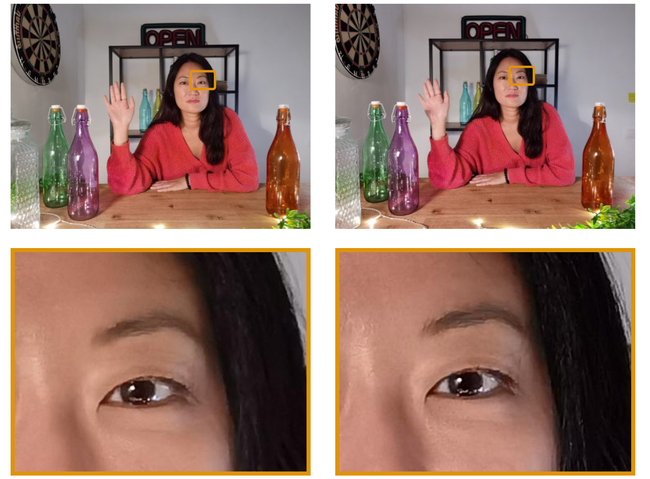
In the same way, as in the image below, the light source behind the camera is about the same color balance.
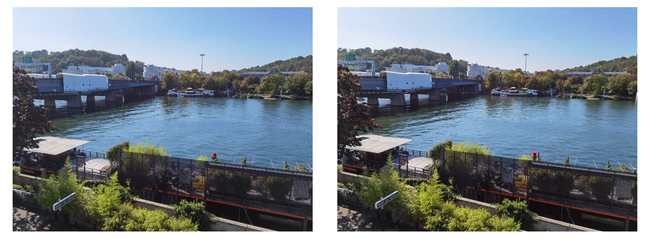
But when the lighting conditions become more complicated, the difference in the photos taken becomes more apparent. For example, when we encounter high-contrast scenes or backlighting, the flares of light are pretty visible in the portrait images. The contrast is lower in the left photo taken with the damaged phone, and the skin color is saturated.
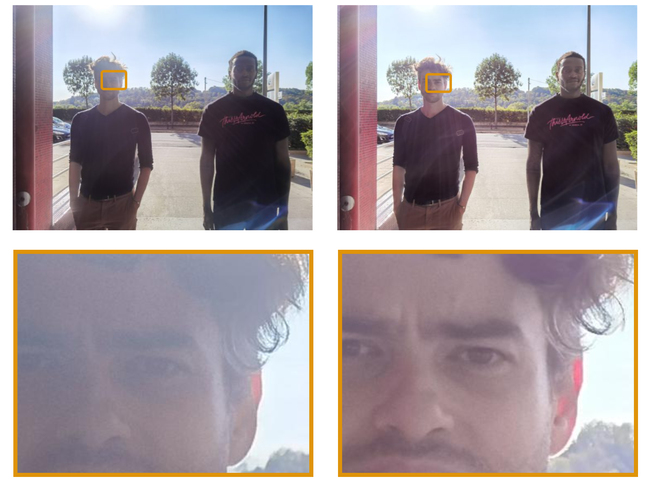
Flames of light are the most apparent problem in this case and can be seen in many images.
For example, look at areas of the roof above the window in the image on the left.
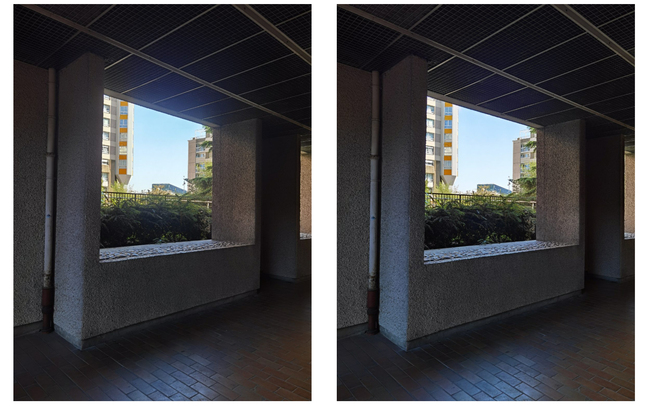
This problem is more about light sources such as LED lights appearing in indoor photos. In these conditions, golden flames of light are created around the lights. The interesting point is the direction and shape of the light flames in the image on the left.
As seen in the first figure, the direction of the scratches on the camera glass was horizontal, and in the figure below, it is also the direction of the vertical flares of light.
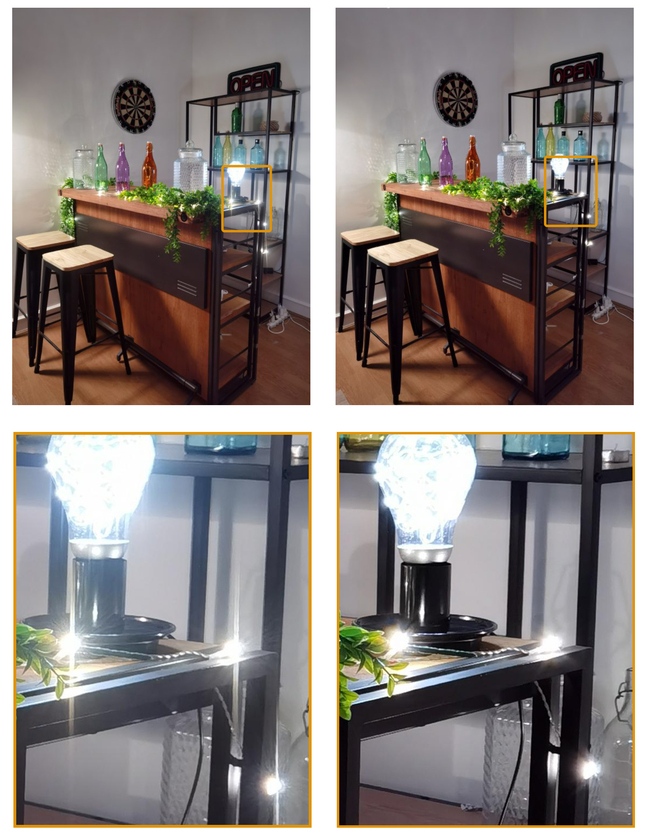
This phenomenon is exacerbated in night photography and, in particular, creates more muscular flares of light around light sources.
In addition, the image on the left lacks detail and shadow in the dark parts of the scene, and the sky is significantly darker.
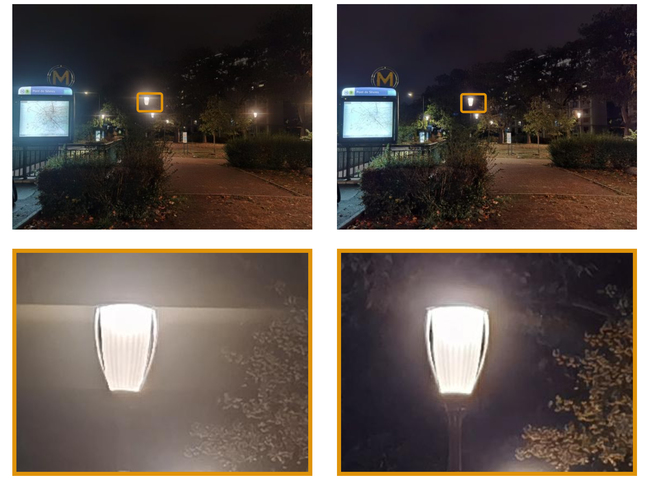
Now let’s look at the effects of light flames in the form of measurements and software. The results of this experiment are shown below, and, as expected, scratches reduce the contrast of the images.
Theoretically, as long as the light source is outside the lens’ field of view, no light should be visible within the sensor’s field of view. But in the graph, the amount of light flame of a light source is located near the lower-left corner, while it is still out of sight in the original image.

According to the results obtained, even in the worst case, a healthy camera controls the phenomenon of light flashes much better than a damaged camera. In natural environments such as the image below, the image’s contrast is often more affected, especially around the faces of the subjects, which can overshadow the ability to recognize the face and reduce the quality of portrait images.
We can see this effect objectively in the image below.
As shown in the figure, the contrast in the upper left corner of the image is further damaged in the affected device.

Ultraviolet, macro, and bokeh cameras
All images above with the P40 Pro primary camera are recorded, but if we use an ultra-wide or macro camera, the same results are recorded. For example, bokeh scratches on the glass do not affect the ability to detect the camera’s depth or in the bokeh display, but still, the images have less flame of light and contrast.
Also, the results when shooting with an ultraviolet camera module are very similar to the primary camera. In the damaged phone, we will see more minor flares of light and contrast than in a healthy phone.
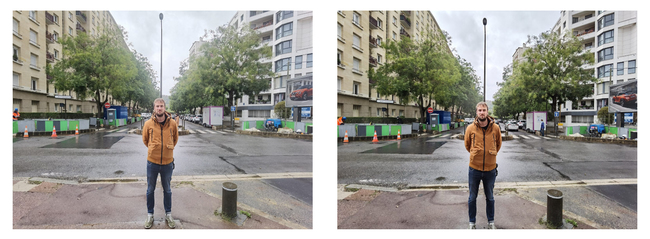
Photographs taken by the damaged telephoto camera show the same state of skin color saturation and low contrast on the subject’s face.

The video
When recording video on a damaged phone, the same defects mentioned in the images appear. Keep in mind that when you move the camera, flares of light around the light sources are more visible, But if we look at it positively, the autofocus and image noise is not affected by scratching the camera glass.
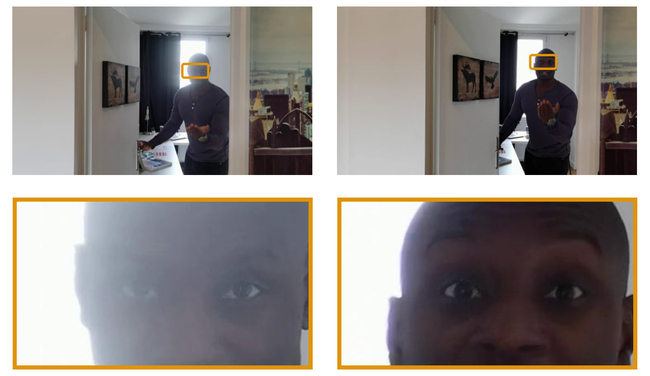
Looking at the results of the above images, it can say that many of the image quality features are not affected by the scratches on the camera glass. These parameters include image detail, autofocus, depth measurement, or bokeh mode.
But as the test results show, scratches create or amplify light flares in the photo, especially when shooting backlit scenes. In addition, damage to the camera glass can significantly affect image quality.
It should note that dirty camera glass can have similar effects, such as reduced contrast in recorded images; for example, the picture on the right is taken with fingerprints on the camera glass.

Conclusion
As you can see, the photos taken by the dirty glass camera are very similar to the damaged camera, except that it can easily be clean. Finally, keeping the smartphone camera glass clean and protecting it from scratches is one of the essential points in maintaining a smartphone.
The phenomenon of scratching the protective glass or glass on the camera module causes the sensation of flame noise more than all the parameters, and in places where the light sources are very weak or very strong, it shows its effect the most.
Finally, if you are one of the users who are very sensitive to this issue and the quality of photos and videos is essential to you, perhaps the best way to use protective glasses for this section in the first place and secondly, to use frames that use a The prominent edge around the camera module reduces the chance of glass coming into direct contact with the surface when placing the phone on a table or other surface.











